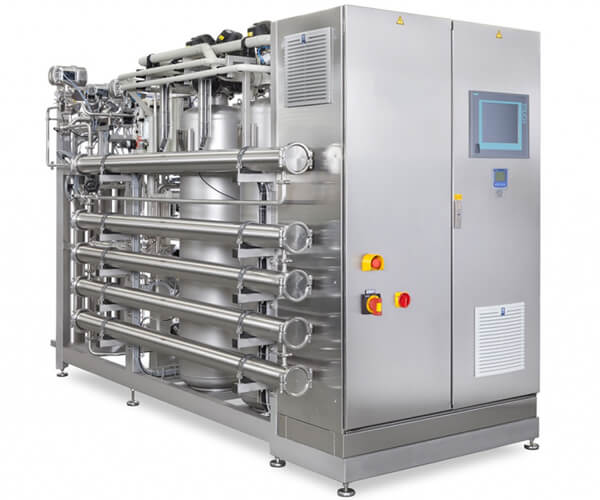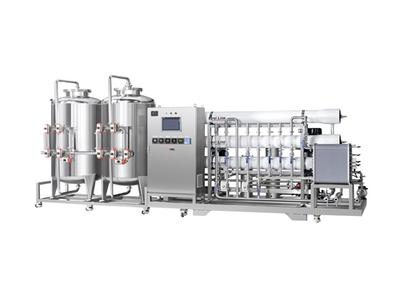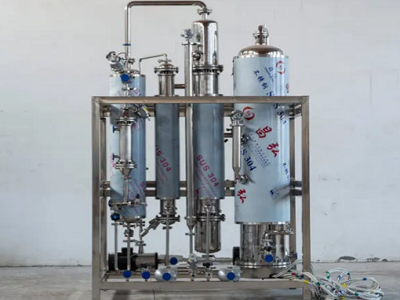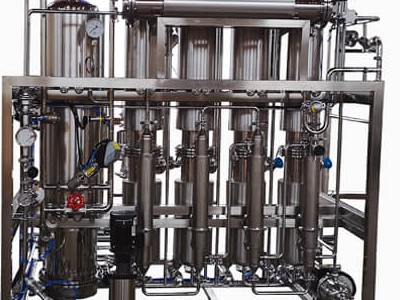Pharmaceutical reverse osmosis systems (RO equipment) are key devices used in the pharmaceutical industry to produce high-purity water. These systems utilize semi-permeable membrane technology to remove dissolved solids, ions, and most organic substances from water, thus generating pure water that meets pharmaceutical requirements.
Semi-Permeable Membrane Filtration → High-Pressure Pump → Separation Process → Clean Water Collection → Solute Discharge
Pharmaceutical reverse osmosis systems use specialized semi-permeable membranes (also called reverse osmosis membranes) with microscopic pore sizes that allow water molecules to pass through but effectively block most dissolved solids, ions, and organic substances.
The water entering the pharmaceutical reverse osmosis system is pushed through a high-pressure pump. This high pressure helps overcome the osmotic pressure of the solutes, thereby forcing the water to pass through the semi-permeable membrane.
In the pharmaceutical reverse osmosis system, the water and most solutes are separated into two streams: one is the clean water that passes through the RO membrane (called the permeate), and the other is the concentrated liquid or residual liquid (called the concentrate), which contains the solutes.
The clean water passing through the RO membrane is collected and forms high-purity water. This water is commonly referred to as RO water or process water, and is used in various pharmaceutical applications, such as drug dissolution, cleaning, and preparation.
The solutes that do not pass through the RO membrane (such as ions, microorganisms, and large organic molecules) are carried away and discharged from the system, keeping the RO membrane clean and maintaining its performance.

Preparation of Process Water: RO water produced by the pharmaceutical reverse osmosis system is commonly used as process water in pharmaceutical manufacturing, such as in drug dissolution, preparation, and cleaning processes.
Water for Injection (WFI): RO water, after further treatment (such as through an EDI system), can be processed to produce high-purity water that meets the standards for Water for Injection (WFI), which is required in injectable pharmaceutical products.
Filling Water: RO water is also used in the drug filling process, ensuring that the water quality meets the required standards and does not contaminate the pharmaceutical products.
RO plant for pharmaceutical industry requires regular monitoring of water quality, and key parameters must be recorded to ensure the output water meets the standards and requirements of the pharmaceutical industry. Regular maintenance and cleaning of the system, such as replacing filter cartridges and cleaning membrane components, are necessary to ensure stable operation and extend the lifespan of the equipment.
RO plant for pharmaceutical industry must comply with GMP (Good Manufacturing Practice) and other relevant regulations to ensure that the water produced meets the high standards required for drug production.
Through pharmaceutical reverse osmosis systems, pharmaceutical companies can reliably obtain high-quality, high-purity water, ensuring the safety and quality stability of the drug production process.


